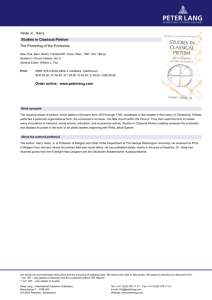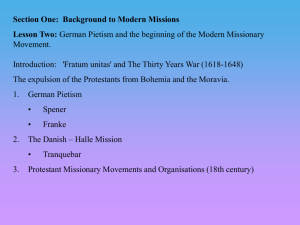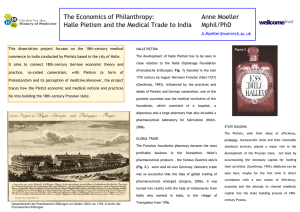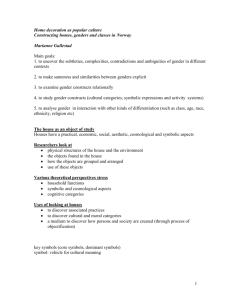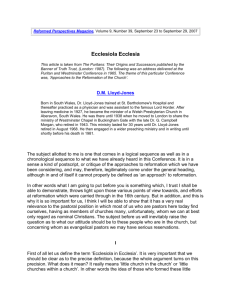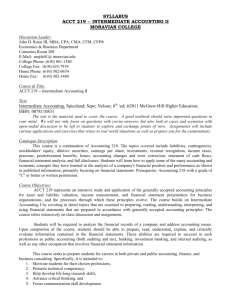Pietism and Quietism
advertisement
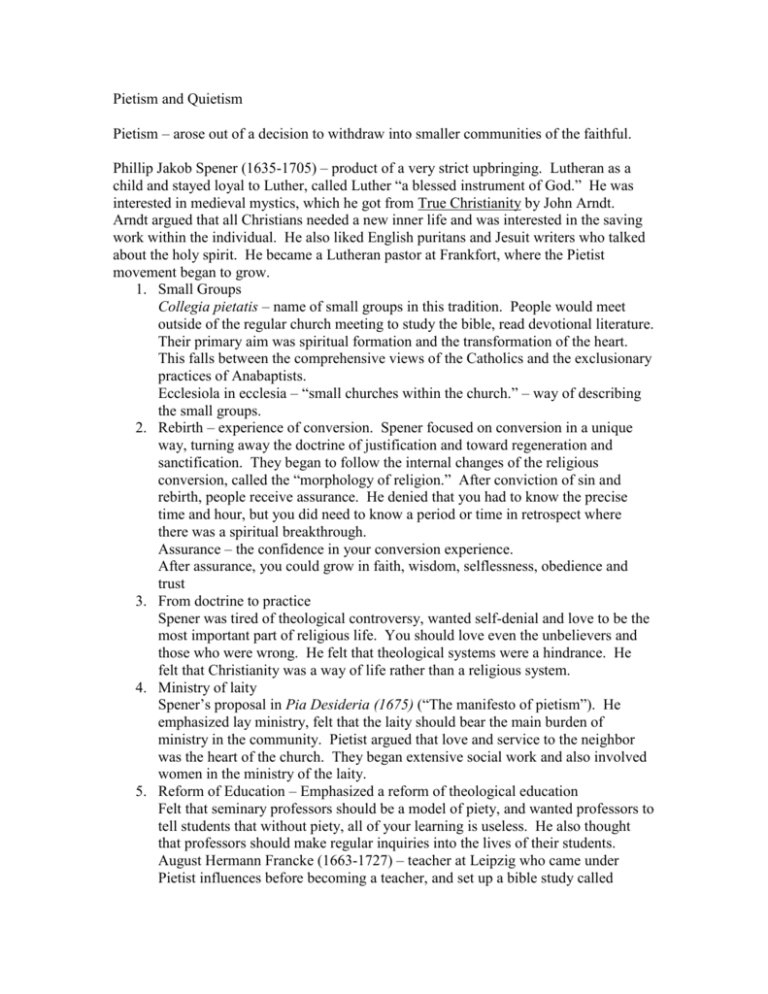
Pietism and Quietism Pietism – arose out of a decision to withdraw into smaller communities of the faithful. Phillip Jakob Spener (1635-1705) – product of a very strict upbringing. Lutheran as a child and stayed loyal to Luther, called Luther “a blessed instrument of God.” He was interested in medieval mystics, which he got from True Christianity by John Arndt. Arndt argued that all Christians needed a new inner life and was interested in the saving work within the individual. He also liked English puritans and Jesuit writers who talked about the holy spirit. He became a Lutheran pastor at Frankfort, where the Pietist movement began to grow. 1. Small Groups Collegia pietatis – name of small groups in this tradition. People would meet outside of the regular church meeting to study the bible, read devotional literature. Their primary aim was spiritual formation and the transformation of the heart. This falls between the comprehensive views of the Catholics and the exclusionary practices of Anabaptists. Ecclesiola in ecclesia – “small churches within the church.” – way of describing the small groups. 2. Rebirth – experience of conversion. Spener focused on conversion in a unique way, turning away the doctrine of justification and toward regeneration and sanctification. They began to follow the internal changes of the religious conversion, called the “morphology of religion.” After conviction of sin and rebirth, people receive assurance. He denied that you had to know the precise time and hour, but you did need to know a period or time in retrospect where there was a spiritual breakthrough. Assurance – the confidence in your conversion experience. After assurance, you could grow in faith, wisdom, selflessness, obedience and trust 3. From doctrine to practice Spener was tired of theological controversy, wanted self-denial and love to be the most important part of religious life. You should love even the unbelievers and those who were wrong. He felt that theological systems were a hindrance. He felt that Christianity was a way of life rather than a religious system. 4. Ministry of laity Spener’s proposal in Pia Desideria (1675) (“The manifesto of pietism”). He emphasized lay ministry, felt that the laity should bear the main burden of ministry in the community. Pietist argued that love and service to the neighbor was the heart of the church. They began extensive social work and also involved women in the ministry of the laity. 5. Reform of Education – Emphasized a reform of theological education Felt that seminary professors should be a model of piety, and wanted professors to tell students that without piety, all of your learning is useless. He also thought that professors should make regular inquiries into the lives of their students. August Hermann Francke (1663-1727) – teacher at Leipzig who came under Pietist influences before becoming a teacher, and set up a bible study called Collegium Biblobiblicum – “the seminar of those who love the bible.” Francke wondered if he was a Christian. When he was 24 he was converted by his own sermon. Francke began to emphasize sudden and drastic conversion. He didn’t deal well with people who disagreed with him, and he got kicked out of Leipzig. He then went to: Univeristy of Halle where Spener already was. Halle became the “Center of the Pietist movement.” It also became a center for Christian missions. Francke led missions to America. Most Pietists felt that the world was ending soon, and that their job was to convert as many people as possible. They spread their understanding of the faith through missions and through emigration and migration. 1. 2. 3. 4. Moravian Pietists – Best example of a Pietist movement based on immigration. Moravians were followers of Hus (long before pietism) and called themselves Unitas Fratrum. They had 3 emphases – the sole authority of the bible, simplicity in worship, disciplined life. In 1722 they leave Moravia and travel to Saxony and end up on the estate of Count Nicholas von Zinzendorf (1700-1760). He was the godson of spener, a student at Halle, wanted to be a minister. As a child he would write loveletters to Jesus and throw them out the window. He believed that the Trinity was father, son, and mother. “Herrnhut” – village that Zinzendorf built for the Moravians to live in on his estate. Zinzendorf helped merge Moravian and Pietist thought, creating Moravian pietism. Spread of Moravian Pietism – they migrated even more. They came to savannah, founded salem and other cities. Quitism – movement within Catholicism, possibly traced to Teresa of Avila. All of the quietist leaders ended up in jail. 1. Miguel de Molinos – Spanish priest who became the spokesman for Quietism Spiritual Guide (1675) – advocated 2 main ideas of quietist theology – the need for annihilation of self and spiritual indifference. Molinas said that “my one goal is to be annihilated for God” and argued that the soul should have no desires for itself whatsoever, not even a desire for its own salvation, but should only say “thy will be done.” He taught that in the process of annihilating evil that you shouldn’t resist temptation, but should let go. He was arrested for immorality. 2. Madame Jeanne Marie Guyon (1648-1717) – disciple of Molinos Wrote Short and Easy Method of Prayer (1685). She argued that you should focus on God. If you focus fully on God, you would not have to follow the external things of God (just like Molinas said). You should empty yourself even of your conceptions of God. 3. Francois Fenelon (1651-1715) – converted to quietism on a carriage ride with Guyon. Fenelon argued for a disinterested love of God, saying that we shouldn’t love God to avoid hell or because God has blessed us but for the sake of God’s own loveliness. His second focus was a prayer of contemplation. “In a true contemplative prayer, the Christian would no longer think of anything but the presence of God and would no longer care for anything except his presence.” 4. Popular Spirituality – Margaret Mary Alocoque – nun who in 1673 has a vision of Jesus, and in this vision she sees the heart of Jesus, and Christ appears before her and says “behold this heart which has so loved humanity” and is transformed by this vision, telling people about it. This begins a popular movement called “the devotion to the sacred heart of jesus.”
